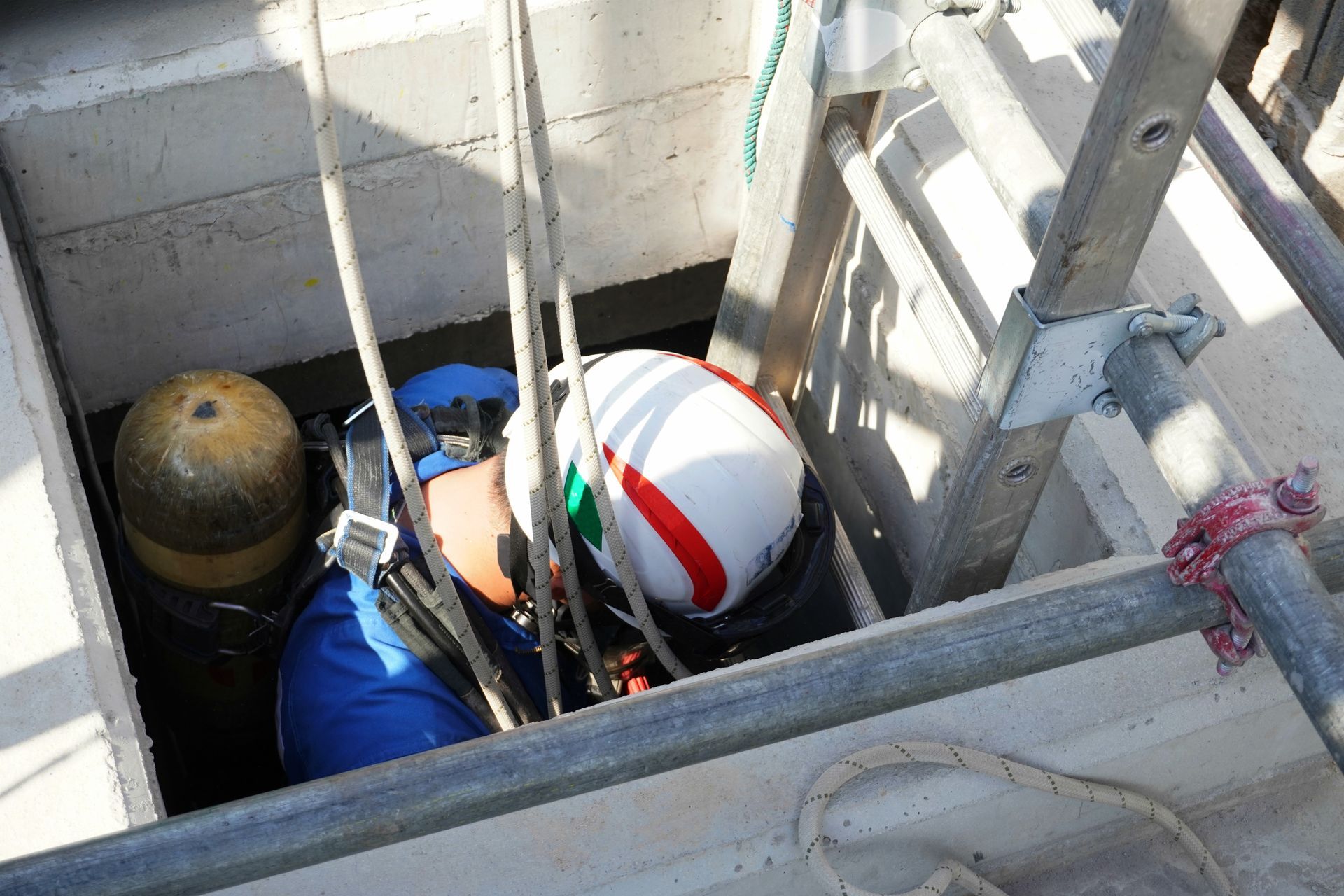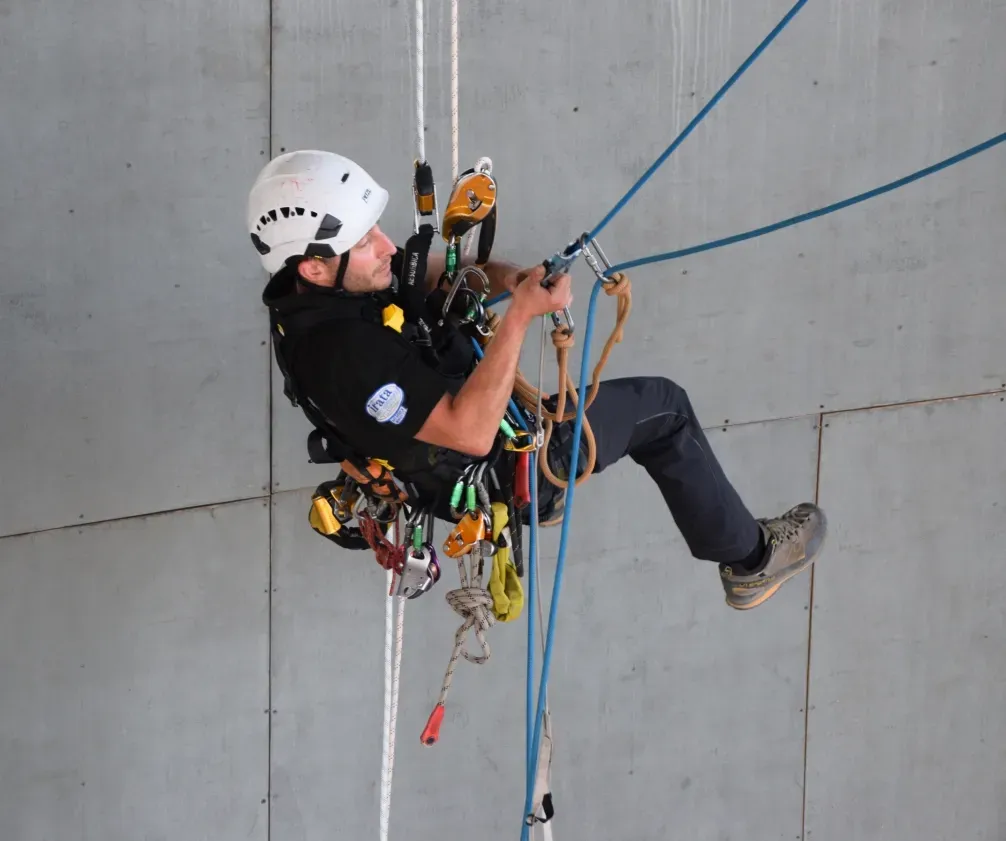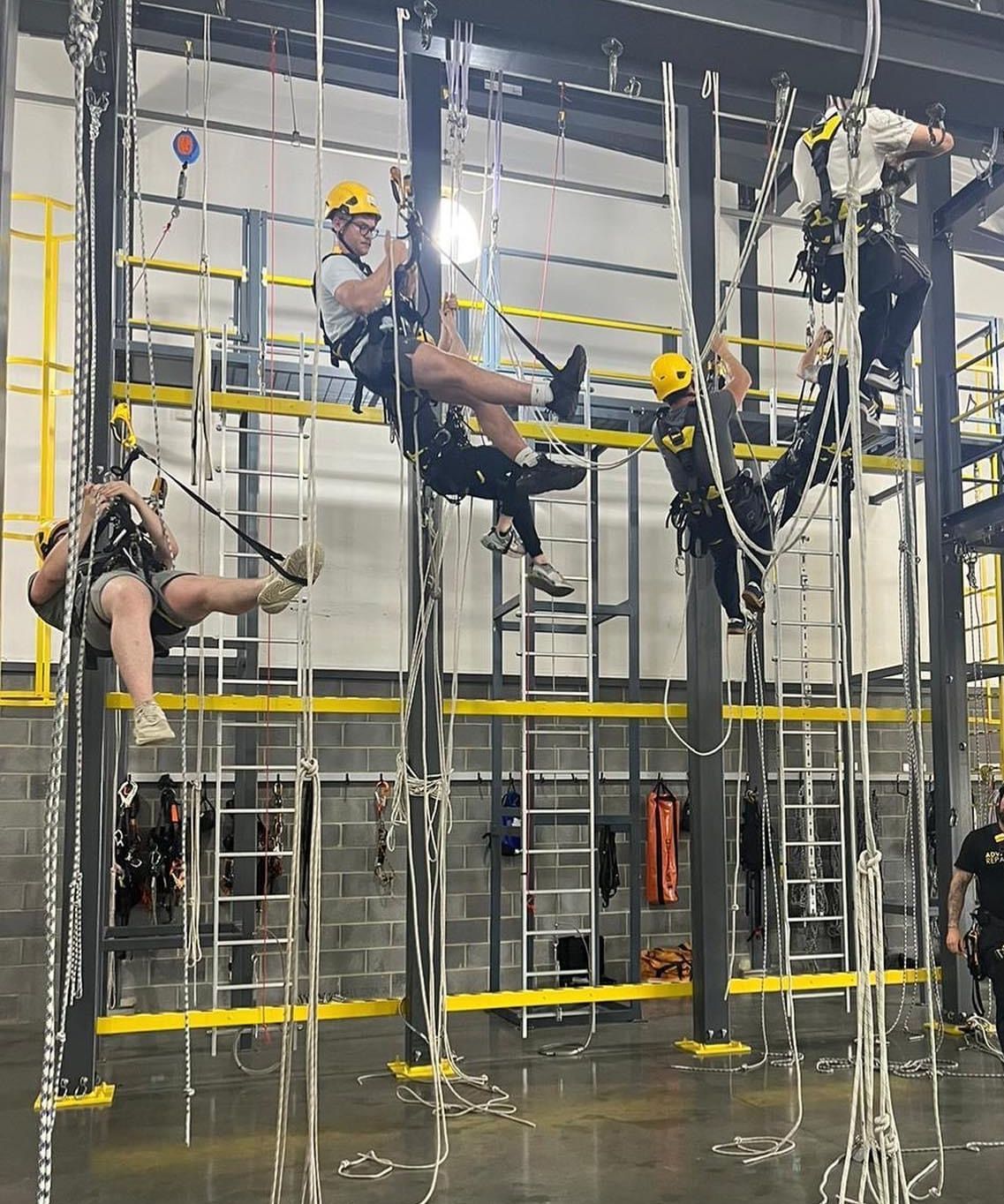Becoming a Rope Access Technician
How to become a Rope Access Technician
IRATA Rope Access Certification
Careers in Rope Access
A career in rope access offers many different opportunities. It’s a great career for those with a head for heights and those who love to work in the great outdoors often in remote locations.
The role encompasses a wide range of different skills and duties vary significantly depending on your experience and qualifications. For example, rope access incorporates jobs such as welding, plating, blare repair, painting and repair work, as well as inspection jobs such as coating surveys, safety inspection and quality control. All of these roles can be on land or offshore based but with one thing in common, they're classified as being highly skilled!
If you’re considering becoming a rope access technician offshore, you’ve certainly landed in the right place. We’ve created a helpful guide outlining everything you need to know about kick starting your career in rope access.
Getting the right qualifications:
First and foremost, you should be aware that any career in rope access requires the correct qualifications. There are three main levels of qualifications in the IRATA rope access training and certification scheme. These qualifications will provide you with an IRATA license so you can become a fully-fledged industrial rope access technician.
And, because you can progress through different levels, including a IRATA level 1 course, IRATA level 2 training, IRATA level 3 training, and IRATA Rope Access Manager Rope Access Safety Supervisor training (RAMRASS), you can progress at a pace that works for you but typically serving at least 12 months between each grade and documenting at least 1000 rope hours.
Rope Access Certification:
Each level reflects your skillset and experience. For example, at level one, you will work as an operator and use existing rigging, providing you are under the supervision of a person qualified at level three.
Once you’ve passed this qualification, you can then progress to level two, where you will learn how to set up rigging and even carry out colleague rescues. Finally, once you’ve completed another 1000 hours at rope access level 2, you can then progress to rope access level 3 where you will allocate jobs and supervise personnel onsite or within a team.
So, what does rope access training entail?
All rope access training will provide you with the practical skills you need to progress in a career working in rope access. You will learn through participating in practical exercises that will provide you with the skills, knowledge and expertise you need to gain a first-hand insight into the job role and what life is like working at height.
You will also be assessed at the end of your course on your technique and you will also be asked a number of different questions on manoeuvres.
What will you be assessed on during your rope access level 1?
If you are ready to kick start your career in rope access, this is what you can expect to cover during your rope access level 1! This should give you an idea of whether this is the right career path for you.
The rope access level 1 course covers:
· Safe working systems and assessing of risk.
· Safe practices.
· Anchor systems.
· Understanding of how IRATA works.
· Personal protective equipment and usage.
· Basic rescues and correct care.
· Rope system rigging.
· Fitting of equipment.
· Manoeuvres, including; descent, ascent, rope changing, work seats, deviation, edge transitions and rope protection.
· Work position systems and fall arrest.
This will give you the skills you need to embark on your new career as an IRATA rope access Level 1. For those techs living in Ireland and wanting to get certification allowing them to work within the fast growing industry of renewables such as wind energy, you may also what to check out our blog post on Funding for GWO training in Ireland.
Why Choose Dangle's Academy
Here at Dangle, we pride ourselves on offering a wide range of professional and comprehensive inspection, access, coatings, and composite (IACC) industrial services and training courses to cater to the needs of both the private and public sectors. Our dedication to providing high-quality work at height solutions and training has helped us establish a strong reputation in the industry.
With a team of highly skilled and experienced professionals, we are committed to delivering exceptional results that not only meet but exceed our clients' expectations. Our on-site working at height services are designed to minimise maintenance costs in the long and short-term, allowing our clients to save on valuable resources.
Located in Belfast, Northern Ireland, our headquarters serve as the centre of our operations across Ireland. However, we also have a Dangle office based in Scotland, ensuring that we can extend our services to a wider clientele across the United Kingdom. No matter where you are located, our team is always ready to assist you with your industrial maintenance or training needs.
If you would like to learn more about how our dedicated team can help you, we encourage you to get in touch with us today. Our friendly and professional staff are always available to provide you with the information and support you require.
Contact us now to discover the Dangle difference and let us be your trusted partner in meeting your industrial service and training needs today.
Rope Access Training Belfast
What Are The Rope Access Levels?
We'd Love a Share...
You might also like



